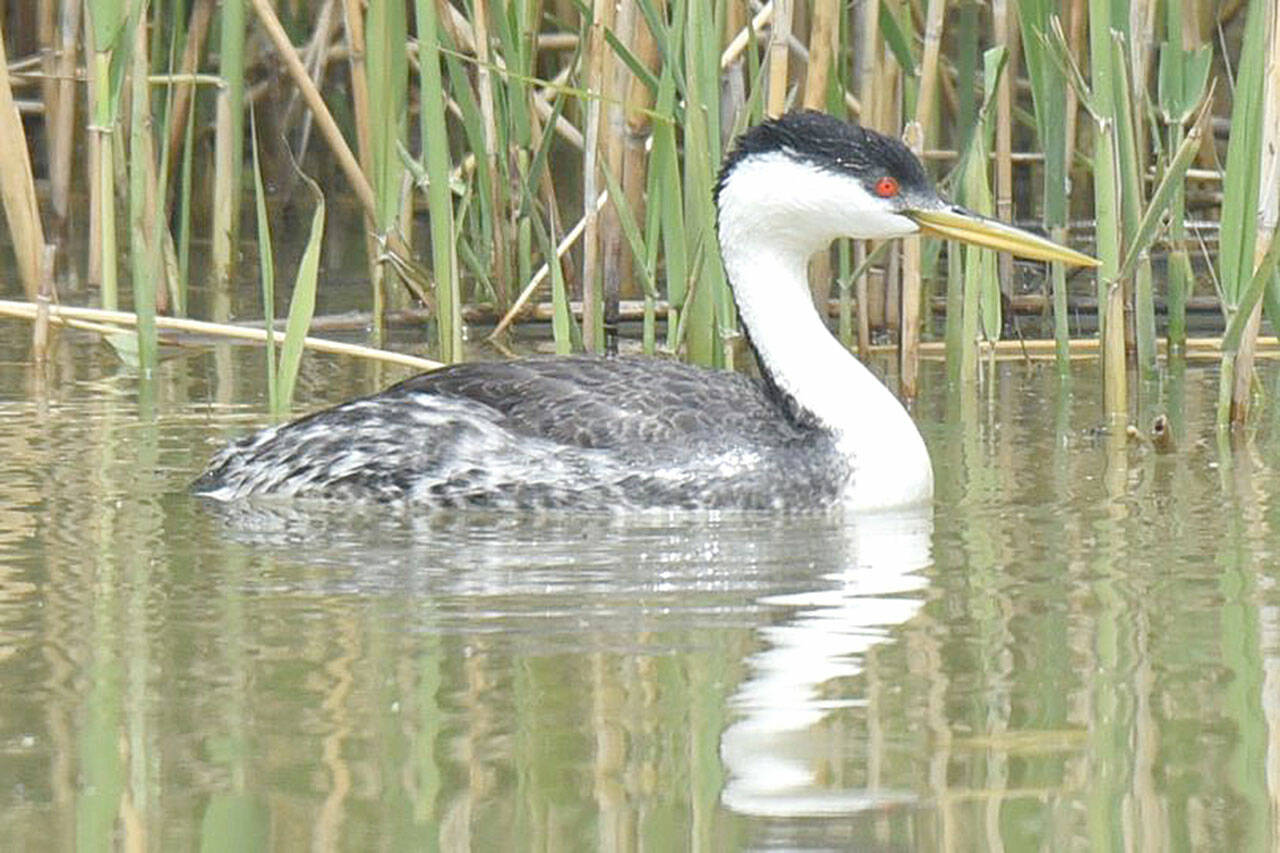Editor’s Note: This commentary is part of a regular series, Green Briefs, written by eco-leaders on Vashon, for The Whole Vashon Project. To find out more about the work of this group, visit wholevashonproject.com.
Birds depend on the habitat available to them, and years of land-use changes on Vashon have led to dramatic changes in the bird species we see.
In a recent presentation sponsored by the Vashon Heritage Society, bird experts Ed Swan and Rayna Holtz reported that some birds became extinct here when the historic old-growth forest habitat they relied on was clear-cut over a century ago. However, the same changes benefited species that like open spaces.
The island was once nearly 50% open space and birds like the Western Bluebird and Lazuli Bunting nested here. Now, as the island slowly reforests, they rarely and briefly visit. And as residential areas with ponds increase the bush- and thicket-loving birds and those that like mixed forests have proliferated.
Ed Swan, the author of “Birds of Vashon Island,” believes that we now have more diversity of bird species due to the diversity of habitats currently available.
Recent bird surveys can show us the trends in bird abundance. As recently as 20 years ago, Quartermaster Harbor held a huge herring nursery that hosted thousands of wintering Western Grebes. These grebes became the basis for the island’s Important Bird Area designation and the face of the local Audubon chapter, shortly before their numbers plummeted from 4781 in 2001 to a low of 5 in 2016 — according to the Christmas Bird Count (CBC) organized by Ezra Parker who also provides the data at cfgrok.com/vashon-cbc-results.
There you can see the Canada goose population is up more than 70%, while ducks like the Northern shoveler and pintails are down more than 90%.
A few predatory bird numbers are trending up — such as bald eagles who continue to recover after the regulation of DDT and hunting. Maury Island used to host a large heron rookery that is gone now, due to the parents being scared off by bald eagles, and crows and gulls raiding the abandoned nests. New field research in Washington sees herons adapting to the eagles. In an avian equivalent of a protection racket, herons were observed moving their nests to follow a nesting bald eagle, effectively deterring other raiders from the rookery.
Birds, like many forms of life, have a remarkable ability to adapt when needed — and more will be needed to survive the current realities of climate change. Climate change is causing large-scale and rapid alterations to habitats.
Temperature changes alter plant, insect and plankton cycles, thus changing food availability at crucial times like migration and hatching. Birds are now laying their eggs earlier and we are seeing changes to their body sizes – generally increasing in hot climates and decreasing in temperate regions. Migration times are shifting, and wildfire smoke alters their routes leading to starvation and death among insect-eating birds.
The areas in which birds live are also changing dramatically. By visiting audubon.org/bird-guide, you can see how your favorite Vashon bird’s range is expected to change. For example, we expect to entirely lose a year-round resident, the red-breasted nuthatch, as it moves to higher elevations and into northern Canada.
You may think three degrees Celsius isn’t much, but it equates to 5.4 degrees Fahrenheit. Here on Vashon, we will see that increase in the winter, and twice that in the summer, when we will experience, on average, nearly 11 degrees Fahrenheit warmer temperatures. That’s why the nuthatches are moving north.
What can we do to help?
On a large scale, we must repeat the call to reduce our collective carbon output, as consumers and commuters. We can also increase carbon storage — through healthy forests, plants, and sustainable agricultural soils. Support habitat-protecting legislation and hold companies accountable.
On the home front, we can educate ourselves about local habitats, and the plants used by local insects and birds. Whereas a few bird species can benefit from non-native plant species, we know that the insects they forage on have very close co-evolutionary relationships with their host plants. Even hummingbirds eat insects.
We can provide those necessary elements on our own properties and choose to make wildlife-friendly landscaping choices. We can and should plant native plants, keeping in mind that climate change will soon create conditions more like what northern California is now experiencing. We can participate in citizen science efforts and organizations that help us understand complex natural ecosystems and our relationships with them.
Birds are calling us to act on climate change. Sign the pledge at act.audubon.org.
— This commentary was written by Adria Magrath with Katrin Fletter, for Vashon-Maury Audubon Society and Green Brief.



